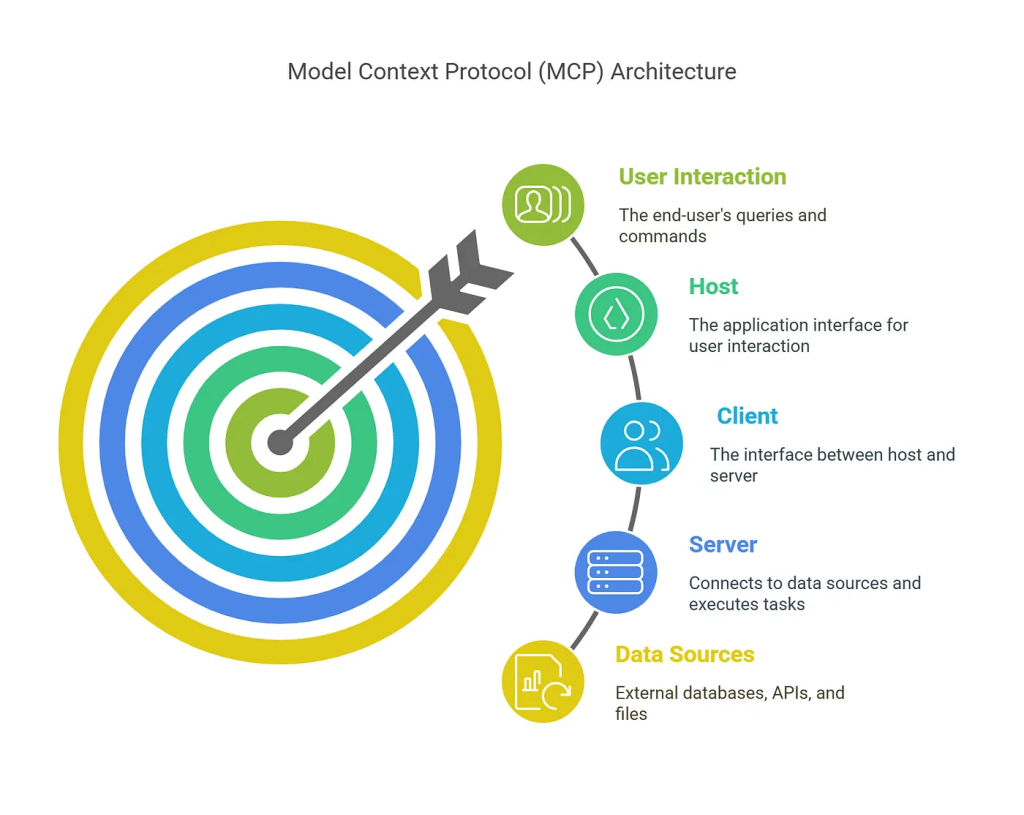
MCP (Model context protocol) is an open-source standard designed to facilitate connections between AI agents and various data sources, such as databases, APIs, and local files. It enables agents to access and utilize external information to enhance their performance and provide more informed responses.
If you’re building AI agents, you’ve likely heard of MCP, or the Model Context Protocol. It’s a new open standard designed to connect agents to data sources like databases or APIs. At first glance, it might seem like just another piece of infrastructure, but it’s worth understanding because it solves a problem that’s becoming increasingly common: how to make agents more useful by giving them access to the tools they need.
MCP Architecture
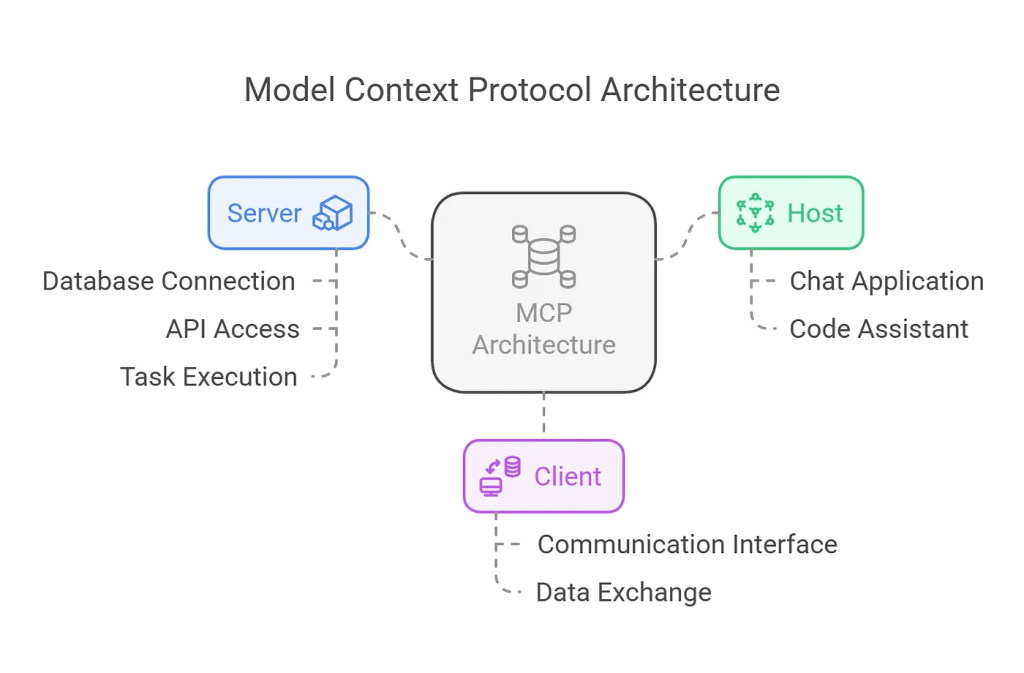
MCP Components
MCP is built around three main components: the host, the client, and the server. The host is the application that uses the agent — it could be a chat app, a code assistant in your IDE, or something else entirely. The host includes the client, which is the interface between the host and the server. The server, on the other hand, is where the tools live. It connects to databases, APIs, or even local files, and it’s responsible for executing the tasks the agent needs to perform.
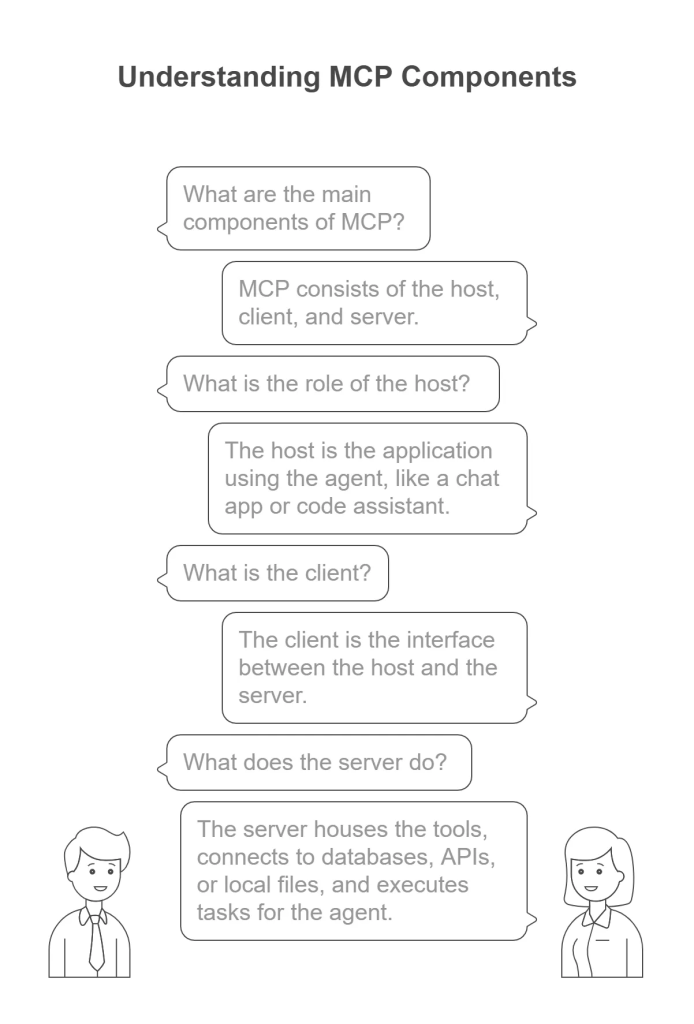
Here’s how it works in practice. Let’s say you’re using a chat app powered by MCP. You ask a question like, “What’s the weather in New York?” or “How many customers do I have?” The host sends this question to the server, which identifies the tools needed to answer it. The host then connects to a large language model (LLM), sends the question along with the available tools, and the LLM decides which tools to use. Once the host knows which tools are needed, it calls the appropriate servers to execute the task — whether that’s querying a database, calling an API, or running a piece of code. The server sends the results back to the LLM, which generates the final answer for the user.
What makes MCP interesting is its flexibility. It doesn’t matter what kind of database or API you’re using — relational, NoSQL, REST, GraphQL, or even local files. MCP abstracts away the specifics, so you can focus on building agents that do useful things. This is especially valuable if you’re building something like a code assistant, where the agent needs to interact with a wide variety of data sources.
One of the key insights behind MCP is that agents are only as useful as the tools they can access. If your agent can’t connect to the data it needs, it’s not going to be very helpful. MCP solves this by providing a standardized way to connect agents to tools, making it easier to build agents that can do more.
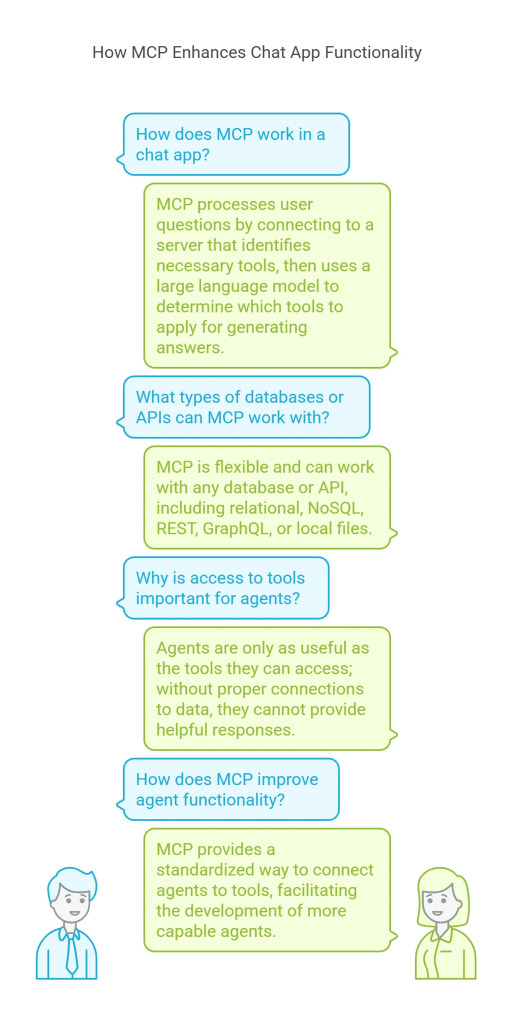
If you’re building agents, you should take a closer look at MCP. It’s still early days, but it has the potential to become a key piece of infrastructure for anyone working in this space. Even if you’re not building agents yourself, your clients might be, and understanding how MCP works will give you a leg up.
The best way to get started is to experiment with it. Try building a simple agent that uses MCP to connect to a database or API. You’ll quickly see how it simplifies the process of giving your agent access to the tools it needs. And once you’ve done that, you’ll start to see all the other ways you can use it.
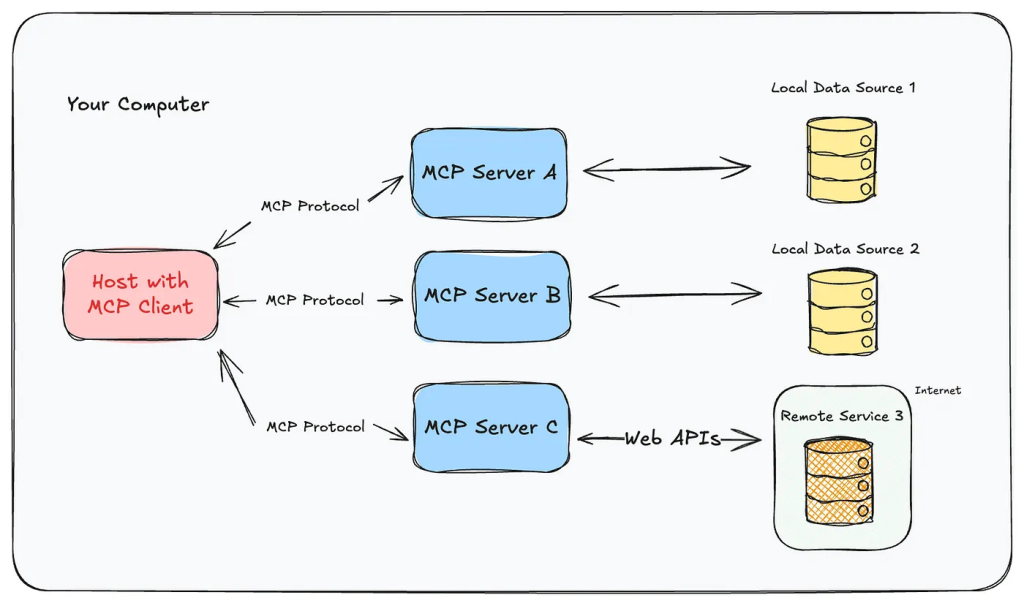
Conclusion
MCP is one of those ideas that seems obvious in retrospect. Of course agents need a standard way to connect to tools. But like most good ideas, it wasn’t obvious until someone built it. Now that it exists, it’s hard to imagine building agents without it.



